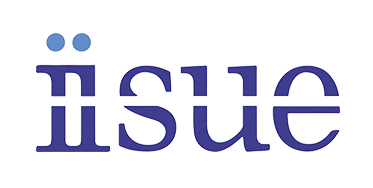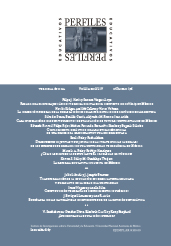¿Cómo responden los estudiantes a problemas históricos? Construcción de conexiones causales según entidad histórica y función causal
Contenido principal del artículo
Resumen
Se caracteriza la construcción de conexiones causales hechas por estudiantes secundarios en una secuencia didáctica centrada en un problema histórico y uso de evidencias. El sentido histórico se elabora considerando agentes, hechos y relaciones causales. Se emplea un enfoque metodológico mixto secuencial cualitativo-cuantitativo para analizar un corpus de 119 conexiones causales. En la fase cualitativa, se identifica mediante códigos el modo de organización de las conexiones causales (antecedente, fundamentación, consecuente). En la fase cuantitativa, un análisis de conglomerados multidimensional de estas conexiones establece 5 grupos, codificados según el tipo y función causal del factor histórico. Los resultados indican que la fundamentación de la relación entre antecedente y consecuente es escasa, mayoritariamente al antecedente se le atribuye la causación. Los factores históricos empleados son: entidad político-social (37 por ciento), concepto histórico (29.4 por ciento) y actor histórico (9.2 por ciento). Las funciones causales predominantes son propiedades de la agencia y temporalidad.
Descargas
Detalles del artículo
© 2025 Universidad Nacional Autónoma de México, Instituto de Investigaciones sobre la Universidad y la Educación. Este es un artículo Open Access bajo la licencia CC BY-NC-ND (http://creativecommons.org/licenses/by-nc-nd/4.0/).
Citas
Carretero, Mario, Liliana Jacott, Margarita Limón, Asunción López-Manjon, y José A. León (1994), “Historical Knowledge: Cognitive and instructional”, en Mario Carretero y James F. Voss (eds.), Cognitive and Instructional Processes in History and the Social Sciences, Nueva York, Routledge, pp. 357-76.
Chapman, Arthur (2003), “Camels, Diamonds and Counterfactuals: A model for teaching causal reasoning”, Teaching History, núm. 112, pp. 46-53.
Coffin, Caroline (2004), “Learning to Write History: The role of causality”, Written Communication, vol. 21, núm. 3, pp. 261-289.
Coffin, Caroline (2006), Historical Discourse: The language of time, cause and evaluation, Londres, Continuum.
Concha, Soledad, Soledad Aravena, Carmen Coloma y Verónica Romero (2010), “Escritura expositiva en tres niveles de escolaridad: coherencia y dominio de recursos lingüísticos”, Literatura y Lingüística, núm. 21, pp.75-92.
Creswell, John W. (2012), Educational Research: Planning, conducting, and evaluating quantitative and qualitative research, Boston, Pearson.
De la Paz, Susan, Mark Felton, Chauncey Monte-Sano, Robert Croninger, Cara Jackson, Jeehye Shim Deogracias y Benjamin Polk Hoffman (2014), “Developing Historical Reading and Writing with Adolescent Readers: Effects on student learning”, Theory & Research in Social Education, vol. 42, núm. 2, pp. 228-274.
Domínguez, Jesús y Juan Ignacio Pozo (1998), “Promoting the Learning of Causal Explanations in History through Different Teaching Strategies”, en James Voss y Mario Carretero (eds.), Learning and Reasoning in History. International Review of History Education, Londres, Routledge, pp. 344-359.
Gan, Guojun, Chaoqun Ma y Jianhong Wu (2007), Data Clustering: Theory, algorithms, and applications, Philadelphia, SIAM.
Gestsdóttir, Súsanna Margrét, Carla van Boxtel y Jannet van Drie (2018), “Teaching Historical Thinking and Reasoning: Construction of an observation instrument”, British Educational Research Journal, vol. 44, núm. 6, pp. 960-81.
Halldén, Ola (1998), “Personalization in Historical Descriptions and Explanations”, Learning and Instruction, vol. 8, núm. 2, pp. 131-39.
Henríquez, Rodrigo y Valentina Canelo (2014), “Géneros históricos y construcción de la significación histórica: el caso de los estudiantes de licenciatura en Historia”, Onomázein. Revista Semestral de Lingüística, Filología y Traducción, núm. especial IX ALSFAL, pp. 138-160.
Henríquez, Rodrigo y Marcela Ruiz (2014), “Chilean Students Learn to Think Historically: Construction of historical causation through the use of evidence in writing”, Linguistics and Education, vol. 25, núm. 1, pp. 145-157.
Hyland, Ken (2011), “Academic Discourse”, en Ken Hyland y Brian Paltridge (eds.), Continuum Companion to Discourse Analysis, Londres, Continuum, pp. 171-184.
Lago, Ignacio (2008), La lógica de la explicación en las ciencias sociales: una introducción metodológica, Madrid, Alianza.
Lee, Peter y Rosalyn Ashby (2000), “Progression in Historical Understanding among Students Ages 7-14”, en Peter N. Stearns, Peter C. Seixas y Samuel S. Wineburg (eds.), Knowing, Teaching, and Learning History: National and International Perspectives, Nueva York, New York University Press, pp. 199-223.
Lee, Peter y Denis Shemilt (2009), “Is Any Explanation Better than None? Over-determined narratives, senseless agencies and one-way streets in students' learning about cause and consequence in History”, Teaching History, núm. 137, pp. 42-49.
Lévesque, Stéphane (2008), Thinking Historically: Educating students for the twenty-first Century, Toronto, University of Toronto Press.
Little, Daniel (2010), New Contributions to the Philosophy of History, Dordrecht, Springer.
Martin, James (2002), “Writing History: Construing time and value in discourses of the past”, en Mary J. Schleppegrell y María Cecilia Colombi (eds.), Developing Advanced Literacy in First and Second Languages: Meaning with power, Mahwah, Lawrence Erlbaum, pp. 87-118.
McCarthy Young, Kathleen y Gaea Leinhardt (1998), “Writing from Primary Documents: A way of knowing in History”, Written Communication, vol. 15, núm. 1, pp. 25-68.
Moje, Elizabeth Birr (2008), “Foregrounding the Disciplines in Secondary Literacy Teaching and Learning: A call for change”, Journal of Adolescent & Adult Literacy, vol. 52, núm. 2, pp. 96-107.
Monte-Sano, Chauncey (2016), “Argumentation in History Classrooms: A key path to understanding the discipline and preparing citizens”, Theory Into Practice, vol. 55, núm. 4, pp. 311-19.
Monte-Sano, Chauncey y Amina Allen (2019), “Historical Argument Writing: The role of interpretive work, argument type, and classroom instruction”, Reading and Writing, vol. 32, núm. 6, pp. 1383-1410.
Monte-Sano, Chauncey y Susan de la Paz (2012), “Using Writing Tasks to Elicit Adolescents’ Historical Reasoning”, Journal of Literacy Research, vol. 44, núm. 3, pp. 273-299.
Paxton, Richard J. (2002), “The Influence of Author Visibility on High School Students Solving a Historical Problem”, Cognition and Instruction, vol. 20, núm. 2, pp.197-248.
Reisman, Abby, Emily Brimsek y Claire Hollywood (2019), “Assessment of Historical Analysis and Argumentation (AHAA): A new measure of document-based historical thinking”', Cognition and Instruction, vol. 37, núm. 4, pp. 534-561.
Reisman, Avishag (2012), “Reading Like a Historian: A document-based history curriculum intervention in urban high schools”, Cognition and Instruction, vol. 30, núm. 1, pp. 86-112.
Snow, Catherine y Paola Uccelli (2009), “The Challenge of Academic Language”, en David Olson y Nancy Torrance (eds.), The Cambridge Handbook of Literacy, Cambridge, Cambridge University Press, pp. 112-133.
Van Drie, Jannet y Carla van Boxtel (2008), “Historical Reasoning: Towards a Framework for Analyzing Students’ Reasoning about the Past”, Educational Psychology Review, vol. 20, núm. 2, pp. 87-110.
Van Drie, Jannet y Piet-Hein van de Ven (2017), "Moving Ideas: An exploration of students’ use of dialogue for writing in history", Language and Education, vol. 31, núm. 6, pp. 526-542.
White, Morton (1970), “The Logic of Historical Narration”, en Sidney Hook (ed.), Philosophy and History. A simposium, Nueva York, New York University Press, pp. 3-4.
Wineburg, Samuel S. (1991a), “Historical Problem Solving: A study of the cognitive processes used in the evaluation of documentary and pictorial evidence”, Journal of Educational Psychology, vol. 83, núm. 1, pp. 73-87.
Wineburg, Samuel S. (1991b), “On the Reading of Historical Texts: Notes on the breach between school and academy”, American Educational Research Journal, vol. 28, núm. 3, pp. 495-519.







